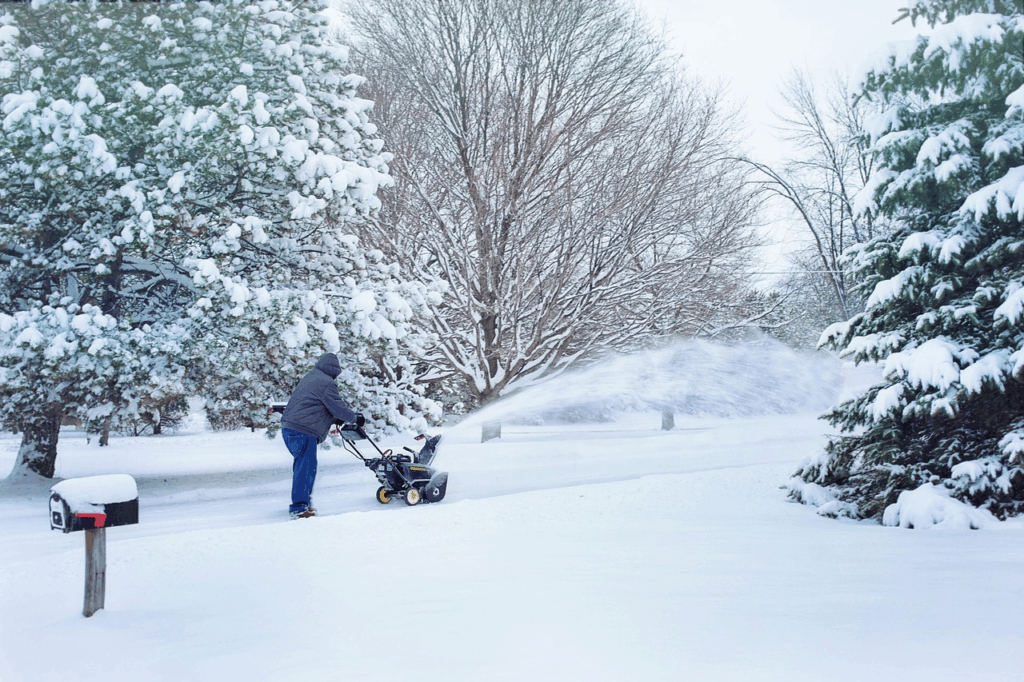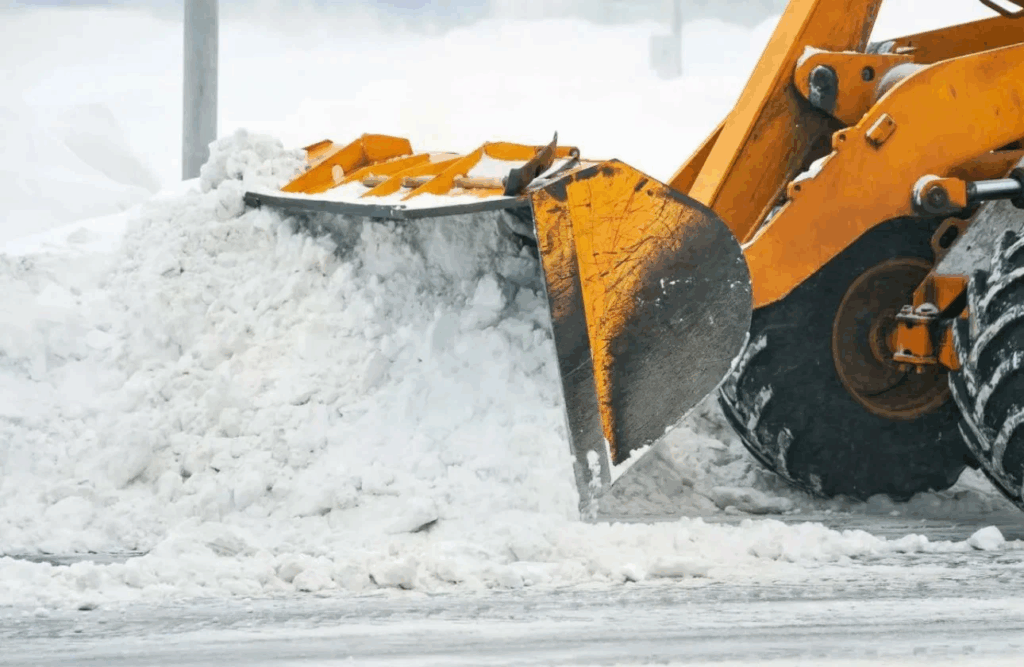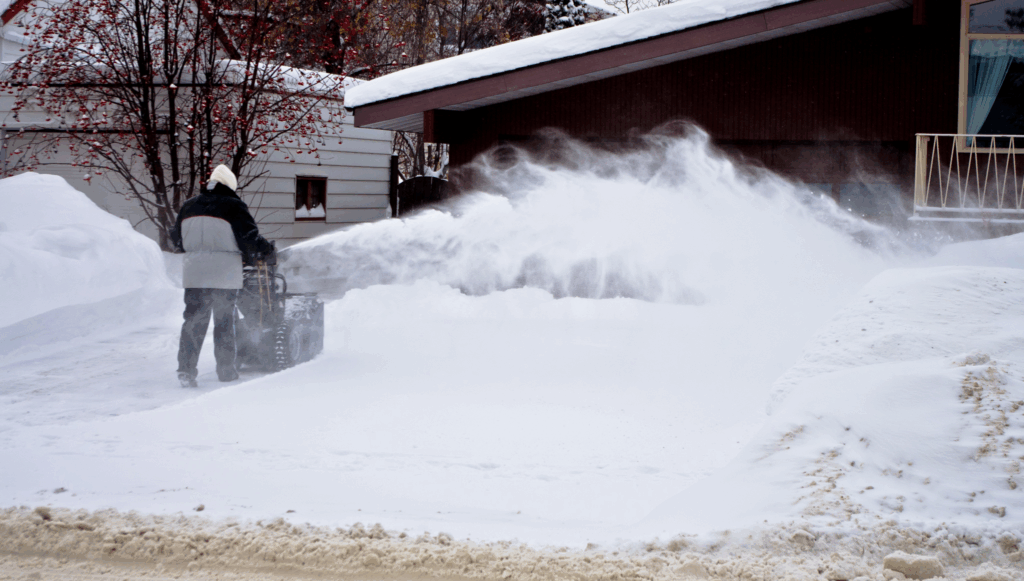Winter in southern Alberta brings unique challenges for homeowners – especially when it comes to keeping driveways, sidewalks, and steps safe and clear. If you live in the City of Lethbridge area, understanding how to manage residential snow removal in Lethbridge is essential not only for convenience, but also for safety and compliance. This guide walks you through what you need to know, from timing and tools to service options and best practices.
Why Snow Removal Is Crucial in Lethbridge
Lethbridge experiences winters characterized by snowfall, freezing conditions, and frequent temperature swings — including the influence of Chinook winds, which can cause rapid melting and refreezing. Wikipedia+1 These patterns mean homeowners face more than just a one-time snow-shoveling task; effective snow and ice management is ongoing.

From a safety perspective, winter conditions in Alberta are serious: according to provincial collision statistics, snow, slush or ice were involved in 15.9% of fatal collisions and 20.3% of non-fatal injury collisions in 2021. Open Alberta Also, slip and fall events on icy sidewalks and driveways are a major contributor to winter hospitalizations in the province. Cuming & Gillespie LLP+1 For homeowners, that means clearing snow isn’t just curb appeal—it’s about reducing liability and protecting your family, neighbours and visitors.
Key Surfaces to Clear After Snowfall
When a snowstorm hits, here are the priority surfaces you should clear:
- Driveway and apron: The area where you drive in/out — the intersection of your property and the street.
- Front sidewalk and steps: Especially important in residential zones.
- Sidewalks/paths to utility meters, bins and mailboxes: These often get overlooked but are vital for safe access.
- Decks, porches and patios: If used in winter, they need attention too.
- Gates, side yards and areas of foot traffic: Even if less used, a neglected path can create danger.
One good rule: clear before snow is compacted by foot or vehicle. Fresh, loose snow is much easier to deal with and less likely to refreeze into dangerous ice.
The Right Tools and Materials for the Job
To manage snow effectively at your home near Lethbridge, a small toolkit will go a long way.
Essential equipment
- A sturdy push shovel (curved blade) for standard accumulations.
- A snow pusher or wide-bladed shovel for wide driveways or lots of snow.
- An ice chopper or flat-blade shovel for breaking up hardened ridges.
- Traction material (e.g., sand, pea gravel) for slopes or shaded areas.
- Deicer: For icy spots after clearing. Use calcium chloride or magnesium chloride for colder snaps; avoid overuse near landscaping and plants.
Tips for tool use
- Mark sprinkler heads, pavers, or hidden edges before winter to avoid damage.
- Regularly clear snow in layers rather than leaving a large mound to deal with later.
- Store traction grit and deicer in a covered bin near your entrance for quick access.
Managing Melting, Refreeze and Chinook Effects
One of the trickiest elements in Lethbridge winter is the cycle of thawing and refreezing, especially when a Chinook blows through. That cycle turns cleared surfaces into slippery hazards quickly.
What to watch for:
- Snow → melt → refreeze: After a warm spell or sudden wind-driven melt, surfaces can become a sheet of ice overnight.
- Windrows from municipal plowing: When the city plow deposits snow at your driveway’s edge, you must clear that ridge promptly to avoid water pooling and refreezing.
- Shaded surfaces: North-facing steps or areas beneath overhangs receive less sun and stay icy longer.
What to do:
- Once snowfall ends, scrape surfaces down to bare concrete or asphalt where possible.
- Sweep off excess meltwater or slush so it doesn’t pool and refreeze.
- Apply a light layer of deicer at sunset in chilled conditions for stubborn zones.
- Keep your attention on edges and transitions (curb, driveway, sidewalk) — water that flows across can freeze into a hidden hazard.
Service Options for Homeowners

If you’d rather outsource rather than shovel every time, there are multiple service models to consider for residential snow removal in Lethbridge.
1. On-call clearing
You call the contractor after each storm. Great if snowfall is light or you’re comfortable waiting a bit. But during major storms, you may face delays.
2. Seasonal contract
You pay a flat fee for the season; the provider covers all agreed storm events and includes follow-up windrow removal or refreeze treatment. Ideal for consistent service and budgeting.
3. Per-push pricing
You pay each time the contractor visits, often based on depth of snow or time of service. Good if winters vary, but make sure you clarify whether windrows, refreeze or curb ridges are included.
4. Premium all-inclusive service
This includes snow clearing, deicing, windrow removal, sidewalk paths, side yards, maybe even roof raking in some cases. Best suited for bigger properties, seniors, or homes with long driveways or extensive pathways.
What to check in the contract
- Trigger depth: At what snow depth the contractor will act.
- Service window: How long after the storm ends they’ll clear.
- Return visits: What happens if ice forms later or the city plow leaves a ridge.
- Covered surfaces: Driveway, sidewalk, steps, side yards – exactly what is included.
- Deicing materials: What types are used and plant/shore safety.
- Documentation: Some contractors provide time-stamped photos or app logs of each visit.
Best Practices for Clear, Safe and Compliant Seasonal Maintenance
Pre-winter preparation
- Reflective stakes to mark sprinkler heads and hidden edges.
- Stock deicer, grit, shovel replacements early (when supplies/costs are easier).
- Review your sidewalk/driveway surfaces for damage and repair before snow flies.
During winter
- Prioritize high-traffic areas first.
- Clear while snow is still loose and light.
- A second pass after a major storm is often wiser than one big later job.
- Stay ahead of melt-refreeze cycles.
- Monitor windrow build-up and remove it as soon as possible.
End-of-season wrap-up
- Remove snow from downspouts and roof edges so meltwater drains correctly.
- Ensure runoff doesn’t flow across sidewalks and refreeze.
- Inspect pavement for cracks and spalling — repair now to prevent winter damage.
Material-Specific Tips: Driveways, Sidewalks & Landscaping

Concrete surfaces
- Older concrete is more prone to spalling. Avoid aggressive deicers like ammonium salts.
- Rake off heavy snow loads near slabs before compaction.
- Seal your concrete each fall to reduce water absorption.
Interlocking pavers or patios
- Make sure sand between pavers is filled before snowfall.
- Use gentler deicers (magnesium chloride) if close to plant beds.
Landscaping and edges
- Do not pile snow too close to shrubs or foundation walls – meltwater and shift can damage roots or siding.
- Keep snow piles off lawns or garden beds; they may suffocate plants underneath.
Clearing Liability and Sidewalk Responsibility in Alberta
In Alberta, property owners (including homeowners) often have a responsibility to keep sidewalks adjacent to their property clear of snow and ice. A high rate of hospitalizations in Alberta results from winter slip and fall events on residential properties. Cuming & Gillespie LLP+1
Failing to clear a path can lead to injuries and liability concerns. Making sure your sidewalk, steps, and access paths are safe is not just good practice – it’s part of responsible home ownership.
Frequently Asked Questions & Answers
How often should I clear during a big snowstorm?
It’s better to clear twice rather than once at the end — for instance, once when snow reaches about 5-8 cm, then again when snowfall wanes. That reduces compaction and makes treatment easier.
Is deicer enough or should I always shovel first?
Shoveling (or mechanical clearing) must come first. Deicer is for treating remaining slick spots—not a substitute for clearing. Otherwise deicer sits on top of a thick layer and is less effective.
What about snow that the city plow pushes into my driveway?
That ridge (windrow) needs to be cleared quickly. If you wait, meltwater may pool at the apron and freeze later, or you may be blocked from exit. Some residential service contracts include return visits specifically for windrow clearing.
My sidewalk faces north and rarely sees sun—what should I do?
Shaded walkways are prime ice zones. Use traction material regularly, apply a light deicer evening/time shift when temperatures drop, and consider adding low-level lighting so the ice sheen is visible.
Final Thoughts
For homeowners in Lethbridge, mastering residential snow removal isn’t just about clearing footprints—it’s about creating a safe, functional space all winter long. With the right tools, a smart plan and timely action, you can avoid the frustration of freezing driveways, icy steps or unexpected service charges. Whether you choose to tackle it yourself or engage a professional provider, having a structured approach will save you time, worry – and risk.
Stay ahead of the snow, stay safe, and enjoy the winter with confidence.
Author
-

Darren is a seasoned content writer at LCW Industries, where he brings years of experience and insight into the world of home renovation and landscaping. With a deep passion for outdoor aesthetics and functional home improvements, Darren has been crafting informative and practical articles that help homeowners make smarter decisions about their spaces. Whether it’s transforming a backyard into a personal oasis or guiding readers through their next renovation project, Darren combines expertise with a genuine love for the craft to deliver content that resonates.
